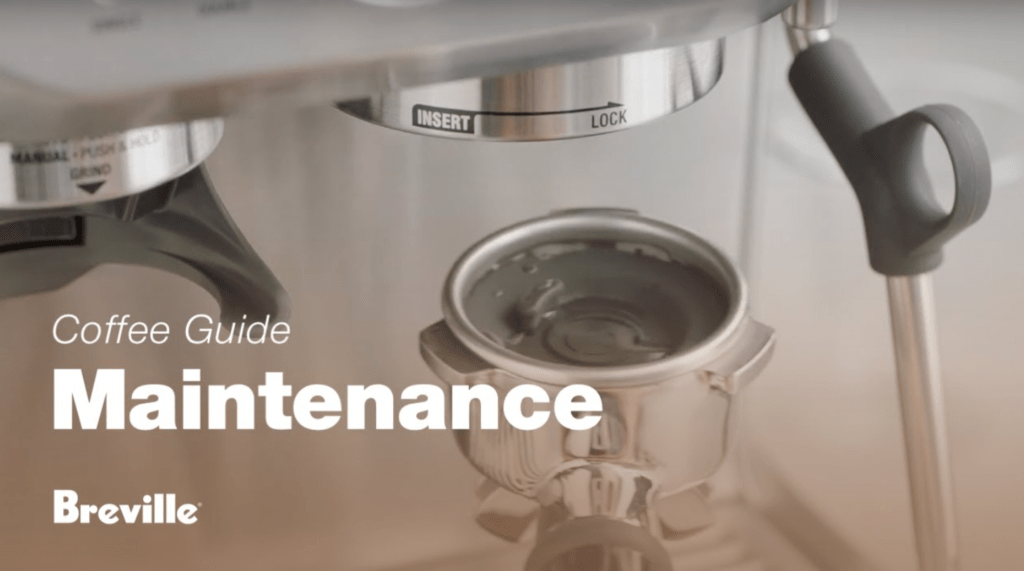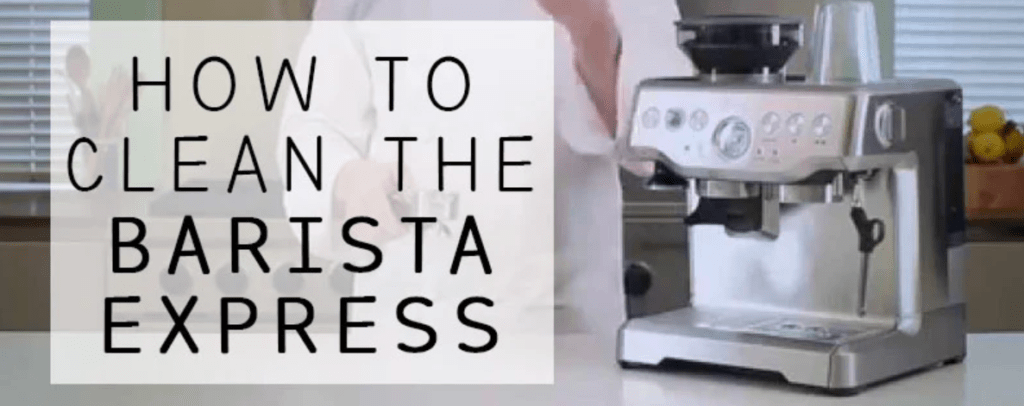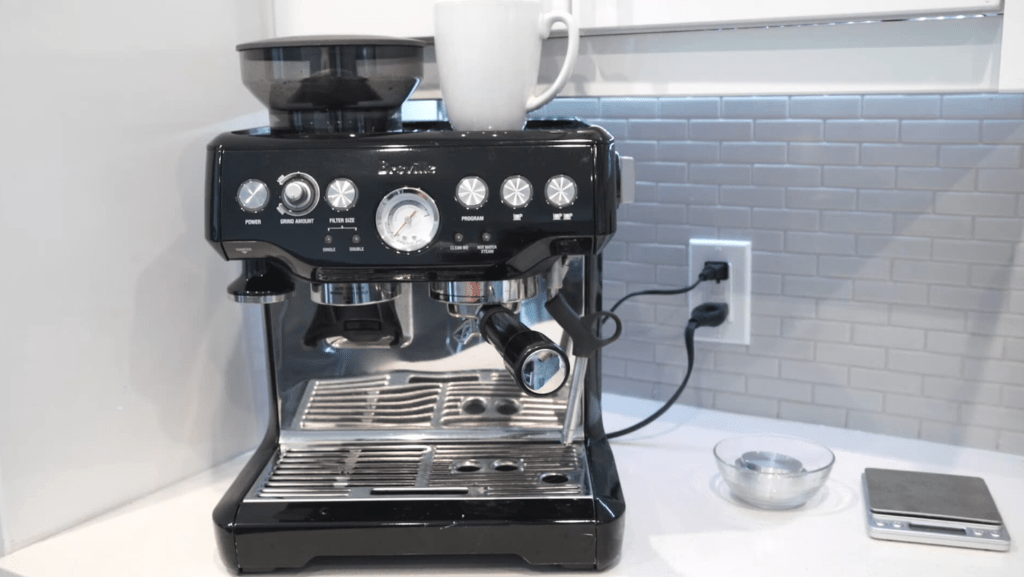Breville Espresso Maker
Brewing a perfect cup of espresso might seem like a daunting task, but with your Breville Espresso Maker, it’s a breeze. Whether you have the Breville Cafe Roma Espresso Maker or the Breville Barista Express Espresso Maker, this guide will help you navigate through the setup and brewing process.
Getting Started with Your Breville Espresso Maker
Before you dive in, familiarize yourself with the components of your Breville espresso maker. Understanding each part and its function will provide you a seamless coffee brewing experience.
Breville Espresso Maker
Breville Espresso Maker – Unleashing the Barista in You
How to Use a Breville Espresso Maker: Step-by-Step Instructions

- Start with Freshly Roasted Beans: For the best espresso, start with fresh beans. This is the foundation for a perfect espresso shot.
- Grind Your Beans: The grind size is crucial for espresso. Use your Breville espresso maker’s built-in grinder (if it has one) to get the perfect consistency.
- Tamp the Grounds: Once you have your grounds, it’s time to tamp. Apply consistent pressure to pack the grounds evenly.
- Brew Your Espresso: Now, everything is ready for brewing. Press the ‘shot’ button or dial on your espresso maker, and watch as the delicious espresso flows out.
By carefully following these steps on how to use a Breville espresso maker, you can extract a great espresso shot every time. Enjoy the process and the resulting delicious cup of coffee. Stay tuned for more tips and tricks on how to get the most out of your Breville Cafe Roma Espresso Maker or your Breville Barista Express Espresso Maker. Happy brewing!
Tips for Optimal Performance

- Keep your Breville espresso maker clean and well-maintained by regularly descaling and cleaning the parts. This will ensure that your machine continues to produce high-quality espresso shots.
- Experiment with different grind sizes, tamping techniques, and ratios of coffee to water to find your perfect brew.
- Use filtered water to avoid any impurities that can affect the taste of your espresso.
- Preheat your espresso cups before brewing to ensure the coffee maintains its temperature for longer.
Mastering Milk Frothing with Your Breville Espresso Maker
Don’t let the art of milk frothing intimidate you! It’s all about technique and practice. Here are some handy tips to help you achieve perfectly frothed milk with your Breville Espresso Maker:
- Choose the Right Milk: Whole milk is often preferred for frothing as it creates a creamy and thick froth. However, if you’re looking for a dairy-free alternative, almond and soy milk also froth well.
- Use the Correct Temperature: Start with cold milk. As for the frother, ensure it’s hot before you begin. Stay vigilant during the heating process; ideal frothing temperature is between 150°F and 155°F.
- Froth Your Milk: Submerge the steam wand just below the surface of the milk at the side of the jug. As froth forms, gradually submerge the wand deeper to heat the milk.
- Watch the Texture: The key to great froth is consistency. You want small, uniform bubbles for a creamy texture. Too large, and your froth will be bubbly and lack creaminess.
- Clean Your Steam Wand: Always clean the steam wand after each use. This prevents any residue build-up which can impact the performance of your espresso maker.
Mastering milk frothing takes a bit of practice, but with these tips, you’ll be creating barista-level cappuccinos and lattes with your Breville Barista Express Espresso Maker or Breville Cafe Roma Espresso Maker in no time. Stay tuned for more guides on how to use a Breville Espresso Maker.
The Importance of Water Temperature in Your Breville Espresso Maker
Achieving the perfect espresso shot with your Breville Espresso Maker isn’t just about the beans and grind size; water temperature plays a pivotal role too. Breville espresso maker how to use the right water temperature? The ideal brewing temperature for espresso is typically between 195°F and 205°F. If the water temperature is too low, your espresso may taste sour due to under-extraction. Conversely, if the water is too hot, you risk over-extraction, resulting in a bitter taste.
The Breville Barista Express Espresso Maker and the Breville Cafe Roma Espresso Maker both allow you to adjust the water temperature to ensure optimal extraction. Experimenting with different temperatures can help you discover the perfect balance for your taste. Remember, a well-extracted espresso shot with the right water temperature will yield a full-bodied, rich, and delightfully aromatic coffee.
Always use fresh, clean, and filtered water in your Breville Espresso Maker for the best results. Stay tuned for more tips on how to use a Breville espresso maker to enhance your coffee experience.
Unleashing Your Creativity: Latte Art with Your Breville Espresso Maker
Latte art is a fantastic way to add a touch of creativity and fun to your coffee experience. With your Breville Espresso Maker, you can become a home-barista and impress your guests with beautiful and intricate latte designs. Here are some tips to help you master the art of making latte:
- Achieve Perfect Milk Froth: The key to great latte art is perfectly frothed milk. Aim for a velvety, glossy texture and remember that consistency is key. Refer back to our ‘Mastering Milk Frothing with Your Breville Espresso Maker’ section for more guidance.
- Practice Free Pouring: Start by pouring the milk slowly from a height into the center of your espresso. As the cup fills up, bring the jug closer to the surface and increase your pour speed. This technique will help form the base of your designs.
- Start with Simple Designs: Begin with a simple design like a heart or a dot. As you get more comfortable with pouring, you can advance to more complex designs like a tulip or a rosetta.
- Use The Right Tools: Invest in a good quality steaming pitcher and a latte art pen. These tools can make the process easier and more precise.
- Practice, Practice, Practice: Like any skill, latte art requires practice. Don’t be disheartened if your initial attempts don’t turn out exactly as you’d imagined. Keep practicing and you’ll see improvement over time.
With these tips and your Breville Espresso Maker, you are now ready to explore the world of latte art. Remember, the goal is to have fun and enjoy the process. Happy brewing and creating! Stay tuned for more tips on how to use a Breville espresso maker to enhance your coffee experience.
Perfecting the Art of Brewing: Espresso Shot Techniques with Your Breville Espresso Maker
Brewing the perfect espresso shot is a craft perfected over time. With your Breville Espresso Maker, you’re already a step closer. Here are some invaluable tips to help you master the brewing process:
- Grind Size Matters: The size of your coffee grounds significantly affects the flavor of your espresso. A finer grind can lead to over-extraction and a bitter taste, while a coarser grind may result in a weak, under-extracted espresso. Experiment with different grind sizes to find what suits your taste best.
- Tamping Technique: After dispensing your coffee grounds into the portafilter, apply a firm and even pressure when tamping. This ensures the water moves evenly through the coffee during extraction, leading to a balanced espresso shot.
- Timing is Key: The optimal extraction time for a standard espresso shot is between 20 to 30 seconds. If your shot takes less time, try a finer grind or tamp harder. If it takes more time, consider a coarser grind or a lighter tamp.
- Measure Your Coffee: The ideal ratio of coffee to water for a single shot of espresso is 1:2. That’s around 18-20g of coffee for a 36-40g yield. Using a kitchen scale can help maintain consistency.
- Clean Equipment: Regular cleaning of your Breville espresso maker ensures the taste of your espresso isn’t affected by coffee oil residue or mineral build-up.
By applying these techniques, you’ll be on your way to brewing barista-level espressos with your Breville Barista Express Espresso Maker or Breville Cafe Roma Espresso Maker. Remember, consistency in your brewing process is crucial. Keep experimenting with different techniques and enjoy the journey of perfecting your espresso. Stay tuned for more guides on “how to use Breville espresso maker”.
Essential Maintenance and Cleaning Tips for Your Breville Espresso Maker

To ensure the longevity of your Breville Espresso Maker and consistently delicious espresso, regular maintenance and cleaning are crucial. Here are some handy tips you can follow:
- Daily Cleaning: After each use, remove the coffee grounds from the portafilter and rinse it thoroughly. Also, rinse the steam wand after frothing milk. This prevents any clogs and keeps your machine running smoothly.
- Descaling Regularly: Depending on the hardness of your water, scale deposits can build up in your machine over time. It’s important to descale your Breville Espresso Maker regularly using a suitable descaler. For how to use Breville espresso maker’s descaling function, refer to the user manual.
- Backflushing: This process helps to remove coffee oils and residue from the shower screen and the brew group. Some models, like the Breville Barista Express Espresso Maker, require regular backflushing. Use the cleaning disc and cleaning tablets provided by Breville for this process.
- Changing Water Filters: The Breville Espresso Maker comes with a water filter that needs to be replaced every two months. Regularly replacing the water filter can significantly improve the taste of your espresso.
- Cleaning the Grinder: Regular cleaning of the built-in grinder is essential, as coffee oil can accumulate and impact the flavor of your espresso. Use a brush or a blower to clean the burrs.
Make these steps a part of your coffee routine, and your Breville Espresso Maker will continue to deliver excellent coffee. Remember, a clean coffee machine is the first step to a great-tasting espresso. Stay tuned for more useful tips on “Breville espresso maker how to use”.
Exploring Different Brewing Methods with Your Breville Espresso Maker
The Breville Espresso Maker provides several brewing methods for the avid coffee enthusiast to experiment with. Understanding these different methods can significantly enhance your home brewing experience. Here are some of the most popular methods you can try out:
- Single Shot Espresso: This is the standard espresso shot. It requires around 18-20g of coffee and results in approximately 30ml of espresso. This is the base for most other coffee drinks and serves as a benchmark for the quality of your coffee beans and your brewing technique.
- Double Shot Espresso: Also known as ‘Doppio’, this is essentially two single shots of espresso brewed using double the amount of coffee. A double shot is richer and stronger, making it perfect for those who prefer a bold coffee flavor.
- Ristretto: This is a ‘restricted’ shot of espresso, brewed with the same amount of coffee as a regular shot but half the amount of water. The result is a more concentrated, intense flavor.
- Lungo: This is an ‘elongated’ shot of espresso, brewed with more water resulting in a longer extraction time. The lungo is milder and has a lighter taste.
- Americano: This is a single or double shot of espresso topped up with hot water, resulting in a coffee drink similar in strength and taste to traditionally brewed coffee but with an espresso’s richness.
With your Breville Barista Express Espresso Maker or Breville Cafe Roma Espresso Maker, you can easily experiment with these brewing methods, and discover your personal favorite. Remember, each method brings out different notes and characteristics from your coffee beans, so feel free to experiment to find your perfect brew. Stay tuned for more tips on “how to use Breville espresso maker”.
Unleashing Your Creativity with Espresso Recipes using the Breville Espresso Maker
Your Breville Espresso Maker is not just for brewing plain espresso shots. With a little creativity, you can whip up a variety of delightful espresso-based drinks right in the comfort of your own home. Here are a few popular recipes you can try:
- Cappuccino: This classic Italian drink is a harmonious blend of equal parts espresso, steamed milk, and frothed milk. To prepare a cappuccino, start by brewing a single shot of espresso using your Breville Barista Express Espresso Maker or Breville Cafe Roma Espresso Maker. Then, steam the milk until it’s warm and frothy. Pour the steamed milk over the espresso, and spoon the frothed milk on top.
- Latte: A latte is a creamier, milder coffee drink made with one part espresso and three parts steamed milk. To create a latte, brew a shot of espresso, then fill the remainder of your cup with steamed milk. Top it off with a small dollop of milk froth.
- Mocha: For the chocolate lovers, a mocha is an espresso shot mixed with hot chocolate and topped with whipped cream. To make a mocha, prepare a hot chocolate in your cup, brew a shot of espresso into it, and stir until blended. Finish off with a dollop of whipped cream and a sprinkle of cocoa powder.
- Macchiato: A macchiato is an espresso shot with a small amount of frothed milk on top. To make a macchiato, first brew an espresso shot. Then, add a dollop of frothed milk on top.
- Flat White: A flat white is a coffee drink made with espresso and microfoam, a velvety steamed milk. It’s similar to a latte, but with less milk and more espresso. To make a flat white, brew a double shot of espresso and then add the microfoam.
By exploring these recipes, you can enjoy a variety of flavors and broaden your coffee horizons. Your Breville Espresso Maker truly unlocks a world of opportunities for coffee lovers. Stay tuned for more exciting tips on “how to use a Breville espresso maker”.
Why Choose Breville Espresso Maker Over Other Brands?

The Breville Espresso Maker sets itself apart from other brands with its exceptional features and benefits. Here’s why you might choose a Breville for your coffee brewing needs:
- Ease of Use: When it comes to “how to use a Breville espresso maker”, the learning curve is surprisingly gentle. The machine is user-friendly, with intuitive controls and a helpful user manual, making it perfect for beginners and experienced baristas alike.
- Versatility: The Breville Espresso Maker offers a range of brewing methods, from single and double shots to Ristretto and Lungo. If you own a Breville Barista Express Espresso Maker or Breville Cafe Roma Espresso Maker, you’ll enjoy the flexibility to experiment and find your perfect brew.
- Quality Construction: Breville Espresso Makers are built to last, with high-quality materials and robust construction. This ensures your machine will withstand daily use and continue to deliver perfect espressos for years to come.
- Built-in Grinder: Unlike many other brands, Breville Espresso Makers often come with a built-in grinder. This means you can grind fresh coffee beans right before brewing, enhancing the flavor and aroma of your espresso.
- Temperature Control: Breville Espresso Makers are equipped with digital temperature control (PID) technology, ensuring your coffee is brewed at the right temperature for optimal flavor extraction.
Investing in a Breville Espresso Maker is a step towards better coffee. Not only does it offer a superior brewing experience, but it also allows for creativity and customization, truly transforming the way you enjoy your coffee at home.
Troubleshooting Common Issues with Your Breville Espresso Maker
Like any machine, your Breville Espresso Maker may occasionally require troubleshooting. Here are common issues you might encounter and how to resolve them:
- The Espresso Is Not Hot Enough: If your espresso doesn’t seem hot enough, try pre-warming your cup before brewing. A cold cup can quickly lower the temperature of your espresso. You can also check to make sure your Breville’s temperature settings are correct.
- The Espresso Tastes Weak or Watery: This could mean that the coffee grind is too coarse. Try adjusting the grind size on your Breville Barista Express Espresso Maker or Breville Cafe Roma Espresso Maker to a finer setting. Also, ensure that you’re using fresh coffee beans, as stale beans can result in a weak brew.
- The Machine Is Not Dispensing Espresso: This may be due to a blocked or clogged portafilter. Remove the portafilter and thoroughly clean it, ensuring there are no coffee grounds blocking the flow of water.
- The Milk Is Not Frothing Properly: If the milk is not frothing as it should, ensure the steam wand is clean and free of any blockages. You should also check that the milk is fresh and at the correct temperature.
- The Espresso Is Brewed Too Quickly or Slowly: This could be related to the grind size. If your espresso is brewing too quickly, the grind might be too coarse, and if it’s brewing too slowly, you may need to adjust to a coarser grind.
Remember, regular maintenance and cleaning of your Breville Espresso Maker can prevent many common issues. However, if problems persist, you should consult the user manual or contact Breville’s customer service. Continue exploring and enjoying the art of espresso making, and stay tuned for more insights on “Breville espresso maker how to use”.
FAQs about Breville Espresso Maker
Here are some frequently asked questions about how to use a Breville Espresso Maker:
How to Clean My Breville Espresso Maker?
Regular cleaning is crucial for the optimal performance of your Breville Espresso Maker. Refer to the cleaning instructions in your user manual. Generally, the process involves running a cleaning cycle with a cleaning disc and cleaning tablet, descaling, and manual cleaning of removable parts.
Can Breville Espresso Makers Brew Other Types of Coffee?
Yes, Breville Espresso Makers are versatile and can brew various coffee styles, from classic espressos to rich cappuccinos and lattes. You can experiment with different brewing methods to find your preferred coffee style.
Why Is My Breville Espresso Maker Not Building Pressure?
The issue might be due to insufficiently ground coffee or a lack of water in the reservoir. Check if the water tank is filled and the coffee is ground to the correct size. If the problem persists, it may be a technical issue, and you should contact Breville’s customer support.
What Is the Best Grind Size for the Breville Espresso Maker?
The ideal grind size for a Breville Espresso Maker is typically a fine grind, similar to table salt’s consistency. However, this can vary depending on your specific Breville model and personal taste preference. Experiment to find the perfect grind size for your ideal espresso.
How Often Should I Clean and Descale My Breville Espresso Maker?
Regular cleaning should be performed after each use, and a thorough cleaning and descaling should be done every month or as specified in your Breville’s manual. Regular maintenance aids in the longevity and performance of your espresso maker.
Remember, enjoying the perfect espresso starts with understanding how to use a Breville Espresso Maker correctly. Keep exploring, and stay tuned for more tips on “Breville Cafe Roma Espresso Maker how to use” and “Breville Barista Express Espresso Maker how to use”.
Conclusion
Using a Breville Espresso Maker might seem complicated at first, but with this guide, you’ll be a pro in no time. Remember, start with fresh beans, grind them to perfection, and heat your cup before brewing. Experiment with different techniques and recipes to elevate your at-home coffee experience. And don’t forget to properly maintain and clean your Breville Espresso Maker for optimal performance.

